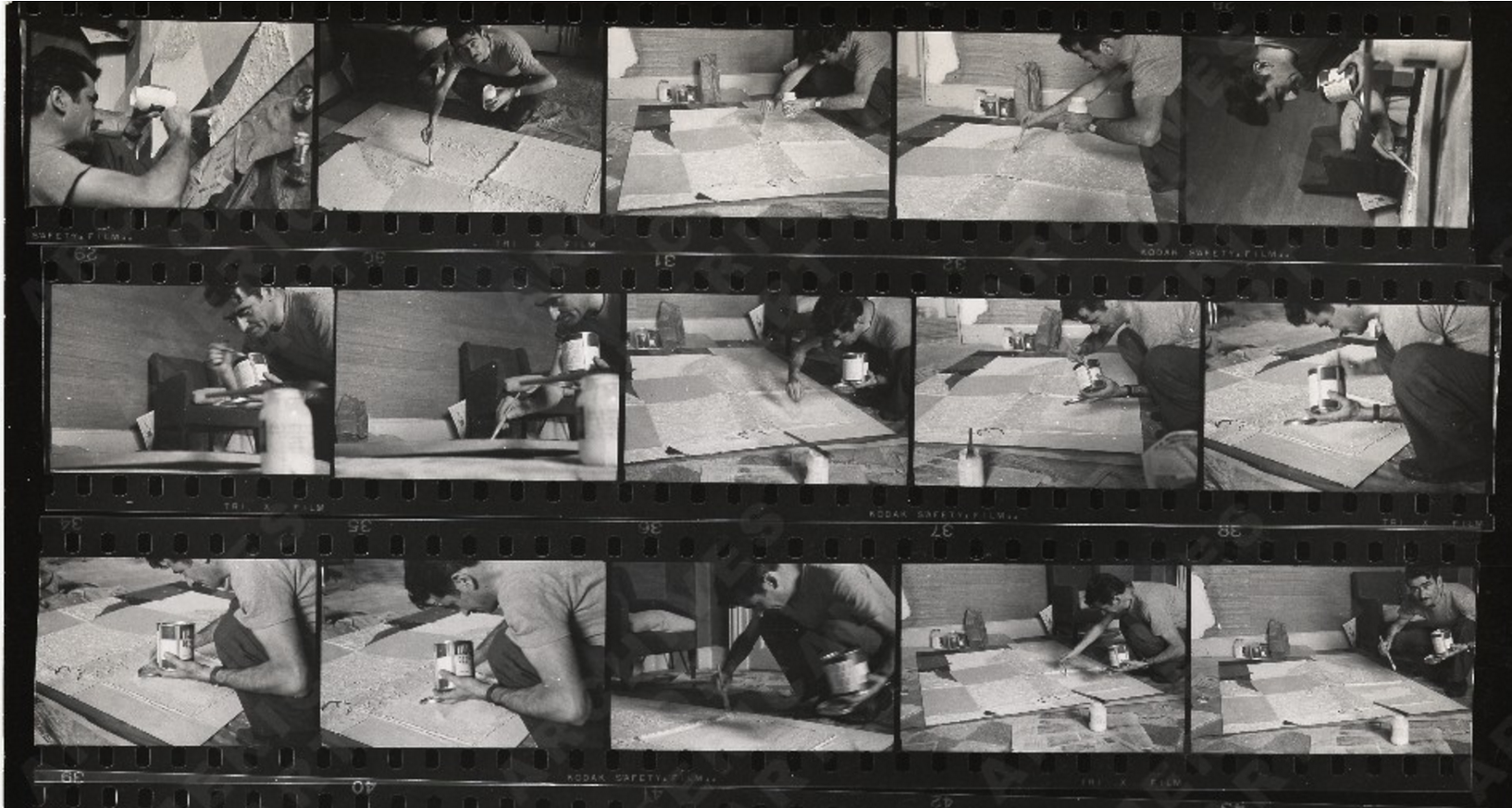PLAYING WITH FIRE
Check out the wild textural abstraction of mid-century Italian painter, (currently @ the Guggenheim Museum NYC)
ALBERTO BURRI
b. 1915, Città di Castello, Italy; d. 1995, Nice
e.l

ABOUT
Alberto Burri was born March 12, 1915, in Città di Castello, a small town in the Umbria region of Italy. In 1940 he received a degree in medicine from the Università degli Studi di Perugia. He served in the Ethiopian campaign and in World War II, first as a frontline soldier and then as a physician. Following his unit’s May 1943 capture in Tunisia, Burri was sent to a prisoner-of-war camp in Hereford, Texas. Disaffected by war and by his internment, he took up painting in an autodidactic, figurative style and never practiced medicine again. In February 1946, Burri was repatriated to Italy and set up a studio in Rome. After his first solo exhibition, at the Galleria La Margherita in 1947, he visited Paris and was influenced byJoan Miró’s collages and Jean Dubuffet’s thickly painted works incorporating tar. Burri exhibited with the Rome Art Club, which familiarized him with Futurist arte polimaterica(“multimaterial” art). Experimenting with unorthodox pigments and resins, he produced hisCatrami (tars) and Muffe (molds), as well as protruding, sculptural canvases that he calledGobbi (hunchbacks). By 1950 he was making assemblages out of burlap bags and household linens—Sacchi (sacks) and Bianchi (whites)—that garnered him international acclaim. His first solo exhibitions in the United States took place in 1953 at the Allan Frumkin Gallery, Chicago, and the Stable Gallery, New York; that same year his work appeared in Younger European Painters: A Selection (1953–54) at the Solomon R. Guggenheim Museum. The Carnegie Museum of Art in Pittsburgh organized his midcareer retrospective in 1957.

Burri developed a new material realism that stood apart from postwar gestural abstraction and its emotive and existentialist content. He blurred the boundaries between painting and relief sculpture and redefined the concept and the making of the monochrome. In the mid-1950s he turned to mass-produced industrial materials in prefabricated colors and developed a new technique of painting with combustion to make torched wood veneer works (Legni[woods]); welded reliefs of cold-rolled steel (Ferri [irons]); and compositions of melted and charred plastic (Combustioni plastiche [plastic combustions]).Burri married the American dancer-choreographer Minsa Craig in 1955, and from 1963 until 1991 they wintered in Los Angeles, where the artist began a dialogue with Minimalism. HisCretti, monochromatic (black or white) fields of induced craquelure, date from the 1970s. The monumental Grande cretto (1985–89) that he built over the ruins of Gibellina, a Sicilian town destroyed by a 1968 earthquake, is one of the largest Land art works ever realized. As part of the foundation he established in 1978, Burri designed his own museum in Città di Castello’s Palazzo Albizzini, and it opened in 1981. In 1990 works from his last series, the Cellotex, painted on flayed fiberboard, went on permanent display in a nearby complex of former tobacco-drying sheds known as the Ex Seccatoi del Tabacco. The artist died February 15, 1995, in Nice. Burri has been the subject of numerous retrospectives in Europe and the United States, including Alberto Burri: The Trauma of Painting at the Solomon R. Guggenheim Museum (2015–16).
Credit : Special thanks to the Guggenheim Museum
ALBERTO BURRI
THE TRAUMA OF PAINTING
http://exhibitions.guggenheim.org/burri/art
http://exhibitions.guggenheim
http://www.guggenheim.org/


Burri in his studio
_____________________________
you just saw the brilliant works of :
ALBERTO BURRI



















































